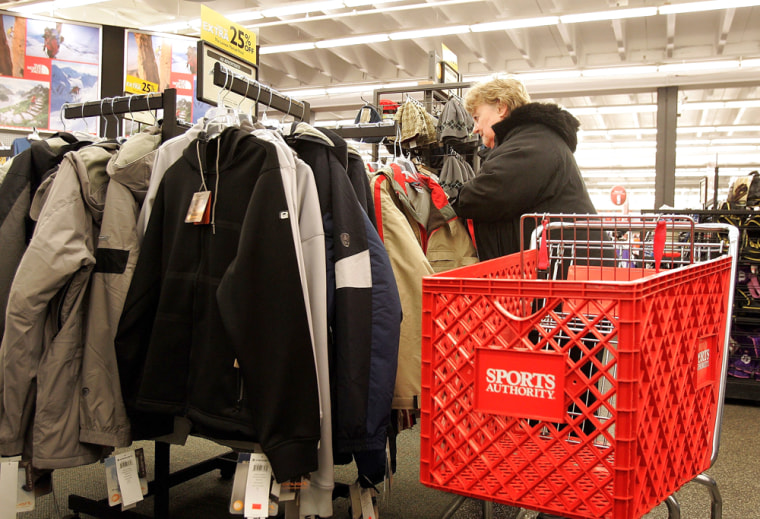Consumers, lured out to the stores by the warmest January in more than a century, spent at a rapid clip that outpaced their incomes.
That meant that their savings rate started the year where it finished 2005, a year which saw a negative savings rate for the first time since the Great Depression.
The Commerce Department reported Wednesday that personal spending shot up by 0.9 percent, the strongest gain in six months. Incomes rose by a solid 0.7 percent, the best showing since September, with the gains attributed to a variety of factors including cost-of-living adjustments for Social Security benefits and the new prescription drug benefit for Medicare recipients.
The bigger rise in spending compared to incomes kept the personal savings rate in negative territory at 0.7 percent in January. That meant Americans spent more than their after-tax incomes, meaning they had to dip into prior savings or increase their borrowing. For all of 2005, the savings rate registered a negative 0.4 percent, the first time the savings rate has been in negative territory for an entire year since the Depression years of 1932 and 1933.
Economists say that this is exactly the wrong time for the savings rate to dip into negative territory with the impending retirement of 78 million baby boomers.
Part of the reason for the dip is that Americans who own homes felt more wealthy in recent years given the huge increases in home values. That spurred them to spend more of their paychecks since their net worth was increasing with their rising home values.

However, the Federal Reserve reported last week that even with the rise in home values, Americans’ net worth rose over the past three years at the slowest pace in more than a decade, reflecting in part reduced investments in the stock market since the bursting of the Internet stock bubble at the beginning of the decade.
The 0.7 percent rise in incomes in January followed a 0.5 percent December increase. It was the largest gain since a 3.1 percent surge in September that reflected the way the government accounted for insurance payments following Hurricane Katrina.
The January increase was bolstered by a number of special factors including a cost-of-living increase for Social Security beneficiaries, the start of the new Medicare drug payment plan and pay raises for federal workers. Without the various special factors, personal income would have risen a smaller 0.4 percent in January.
The 0.9 percent rise in consumer spending followed a strong 0.7 percent increase in December and was the biggest gain since a 1.4 percent surge last July, a month when consumers flocked to auto showrooms to take advantage of extremely attractive incentive offers.
January sales were bolstered by the warm weather, which lured shoppers to the malls, and by a rebound in auto sales.
Disposable income, the amount left after paying taxes, rose by 0.5 percent last month. The personal savings rate, the amount left after subtracting spending from disposable incomes, dipped to a negative 0.7 percent in January compared to a negative 0.4 percent in December.
An inflation gauge closely watched by the Federal Reserve showed that prices excluding energy and food rose by 1.8 percent for the 12 months ending in January, a slight improvement from a 1.9 percent increase for the 12 months ending in December.
